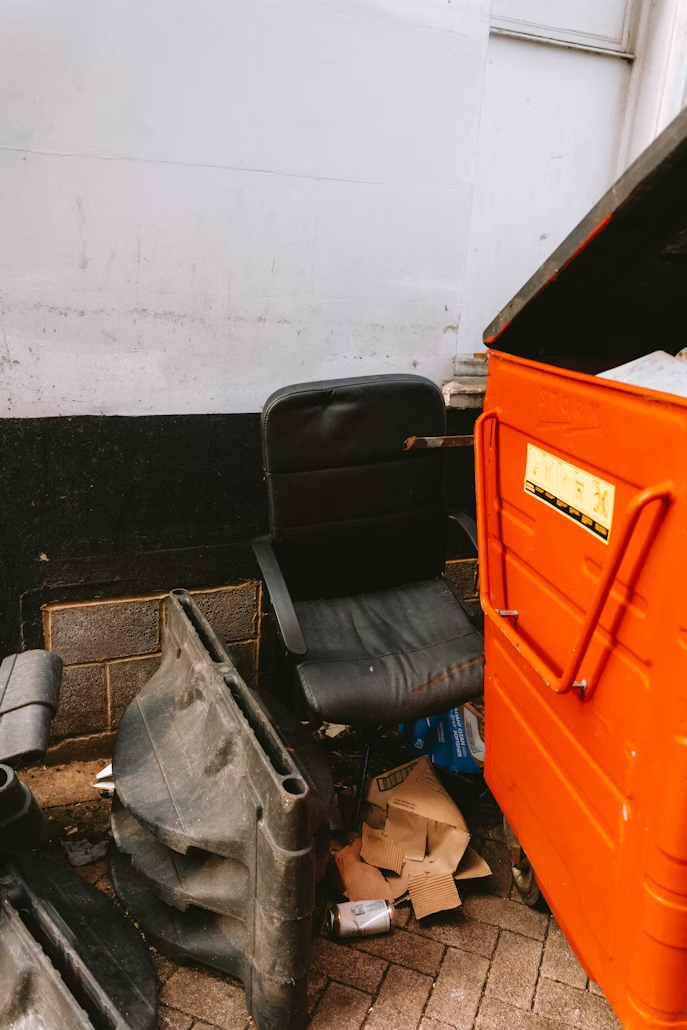
Whether you’re clearing out a garage, remodeling a kitchen, or managing debris on a jobsite, picking the right dumpster service can make the difference between a smooth, predictable experience and a project that stalls under piles of waste. This guide walks you through how services work, how to size correctly, what affects pricing, where to place a container, what you can and can’t load, and the simple checks that help you avoid surprise fees. For Arizona residents, Junk Rescue AZ provides dependable local support for residential and commercial clean-ups.
What a Dumpster Servicer Actually Does
A reliable provider isn’t just a truck and a bin. At minimum, they should:
- Consult on size and material type. They’ll estimate debris volume and typical weight so you don’t overpay or hit overage fees.
- Deliver and place safely. Drivers should assess slope, clearance, and surface conditions, then set wooden boards if needed.
- Handle disposal and compliance. They know which landfills, transfer stations, and recyclers accept your materials and what paperwork is required.
- Swap or pick up on time. Clear delivery and pickup windows, and the ability to do “swap-outs”, keep projects moving.
- Provide transparency. Upfront info on weight allowances, rental days, and prohibited items prevents billing problems later.
How to Size a Container (and Why It Matters)
Container sizes are measured in cubic yards. Common options:
- 10-yard: Small cleanouts, bathroom remodels, or light yard waste.
- 15-yard: Slightly larger footprint for projects with tight driveways.
- 20-yard (popular): Kitchen remodels, multi-room purges, or roofing (check shingle limits).
- 30-yard: Medium renovations, bulky furniture, or light construction debris.
- 40-yard: Major remodels or commercial build-outs.
Rule of thumb: If you’re unsure, go one size up for mixed household junk, it’s bulky. Go one size down for heavy materials like dirt, brick, or concrete since weight limits come fast.
Practical Sizing Cues
- A one-car garage stuffed to the rafters typically needs a 20-yard.
- A full-home flooring tear-out often calls for a 30-yard.
- Dedicated concrete or dirt loads stay safest in 10–15-yard bins to stay within road weight limits.
What Drives the Price
Pricing varies by region, but most quotes include:
- Base rate: Container, delivery, pickup, and disposal up to a weight limit.
- Weight allowance: Usually 1–3 tons for household or construction debris.
- Rental days included: Commonly 7–10 days, with optional extensions.
- Material type: Mixed debris, shingles, or heavy waste may cost more.
- Distance and access: Long hauls or tricky placements can add surcharges.
- Local add-ons: City permits, special handling, or environmental fees.
Tip: Ask for typical weights by project type. Roofing shingles, for instance, weigh more than most homeowners expect.
Placement, Access, and Permits
The safest placement is a driveway, but if you need to use the street:
- Check permit rules. Some cities require right-of-way permits or reflective markers.
- Confirm clearance. Trucks need roughly 60–80 feet of straight approach, 12–14 feet of width, and at least 20 feet of vertical clearance.
- Protect surfaces. Request boards under wheels for new concrete or pavers.
- Keep it level. Avoid slopes or soft ground that cause containers to shift.
If you share a driveway or live on a narrow street, let dispatch know early so they can send the right truck.
What You Can Load, And What to Keep Out
Allowed (typical):
- Drywall, lumber, flooring, cabinetry
- Furniture, mattresses (sometimes a handling fee)
- Yard debris or storm waste
- Roofing shingles (within weight limits)
- Concrete, brick, rock, dirt, as dedicated clean loads only
Prohibited or special handling:
- Paints, solvents, oils, fuels
- Batteries, tires, electronics
- Refrigerant appliances unless tagged
- Medical or biohazard waste
- Asbestos materials
- Pressurized containers (propane tanks)
When uncertain, snap a photo and ask first, one prohibited item can make an entire container costlier to dispose of.
Loading Strategy to Avoid Extra Charges
- Distribute weight evenly. Load heavy items first, centered, then lighter debris.
- Break down bulk. Disassemble furniture and cut branches to length.
- Do not overfill. Debris must stay level with the top rail for safe transport.
- Keep liquids out. Rain, paint, and oil add weight, cover the bin before storms.
- Stage waste. Pre-sort so loading is quick and organized.
Residential vs. Contractor Needs
Homeowners value weekend flexibility and simple driveway setups. Look for:
- Call-ahead delivery windows
- Quick pickups after completion
- Friendly guidance on weight and materials
Contractors prioritize consistency and turnaround speed:
- Swap-outs for ongoing work
- Separate inert containers for concrete or dirt
- Clear site signage showing allowed materials
- Early or late delivery options to match crew schedules
Sustainability and Diversion
A growing share of debris can skip the landfill if kept clean:
- Concrete and masonry → recycled into aggregate.
- Metal → recycled, sometimes with rebate value.
- Clean yard waste → composted or mulched.
- Reusables → donated to building-reuse centers.
Ask your provider what materials qualify; diversion reduces both tipping costs and environmental impact.
How to Evaluate a Dumpster Servicer
Use this checklist before booking:
- Transparent pricing with weight limits and daily rates stated clearly
- Realistic delivery and pickup windows
- Clean, well-maintained equipment
- Proof of insurance and coverage area knowledge
- Strong reviews mentioning on-time delivery and honest billing
- Recycling or diversion options available
- Digital agreements and emailed receipts or weight tickets
Common Mistakes (and Easy Fixes)
- Underestimating volume: If in doubt, size up.
- Ignoring weight: Shingles and dirt get heavy fast.
- Skipping permits: Street placement fines are easily avoided.
- Late extension calls: Call 24 hours before pickup.
- Mixing prohibited items: Keep a small tote for paints or batteries to drop off separately.
FAQs
How long can I keep a container?
Most rentals include 7–10 days; extensions are available for a daily rate.
Will it mark my driveway?
Careful providers use boards under the wheels. Mention new concrete or pavers when booking.
Can I mix junk with construction debris?
Usually yes, but avoid mixing dirt, rock, or shingles, they add heavy weight.
What if I finish early?
Call dispatch; many providers can pick up within one business day.
The Bottom Line
The right dumpster service saves money, time, and stress by matching the container to your debris, placing it safely, keeping you compliant, and showing up when promised. Whether it’s a small home project or a large construction site, Junk Rescue AZ delivers clear communication, fair pricing, and dependable scheduling so every load leaves your property clean and your project on track.





